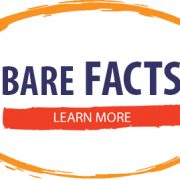How Customer Experience Give Way to Personalized Journeys
‘Poor personalization can drive disengagement just as often as good personalization drives engagement. It’s not enough to just use the data you have available; you must create content that utilizes that data and makes your consumer feel like you know more about them than just their name and company.’ BARE shares an article by Justin Sharaf for Total Retail about maximizing personalization.
‘Customer experience has been all the rage in B-to-B marketing, but it’s given way to defined, personalized journeys for win-win scenarios for each consumer.
I recently received an email that opened with, “Hi Justin,” and thought, “Maybe this company will do it right.” Unfortunately, the rest of the email was a big disappointment and I wasn’t interested. Unsubscribe, delete, goodbye.
Poor personalization can drive disengagement just as often as good personalization drives engagement.
It’s not enough to just use the data you have available; you must create content that utilizes that data and makes your consumer feel like you know more about them than just their name and company.
At my company, we had a great piece of content that we were using for lead generation. It was so great that we also used it in the first email of our nurture program. Guess what happened? People who entered our funnel because they engaged with this great piece of content were then receiving an email the next day asking them to engage with that same piece. At least we started the email with, “Dear Jane” and included, “We know that companies like ACME are interested in content like this.”
So it was personalized, right? Wrong!
Great personalization is best when the person doesn’t even realize the extent of your personalization efforts. It’s best when they think, “Wow, this is exactly the content I wanted and I didn’t realize I wanted it!” It’s not apparent to the email recipient that all you’re doing is using the information you know about them to make their experience better.
There’s a lot of talk about data privacy and the need for consumers to be protected from companies collecting and using personal data about their customers. However, wouldn’t most consumers prefer to be delivered content that interests them, rather than content that doesn’t?
If I’m searching for clothes, I want to see styles and sizes that appeal to me. Am I the only one who sees a great sale on hoodies or jackets in an email and then is disappointed to find out it’s only available in XXL or XS on the website? Showing me only the styles that are available in my size is a perfect type of personalization that isn’t creepy or intrusive at all!
This same concept applies to B-to-B. I don’t want to receive an email about a blog post I’ve already read. If I’m in the healthcare industry, I don’t want to see a case study about a pet food company. If I’m in marketing, I don’t want to see content geared toward HR.
When I’m on a website, I want to be able to easily see content that interests me, and I don’t want to spend time trying to find it.
In order to do that, companies need to collect and manage data about their customers, and customers must be OK with that. Customers cannot have their cake and eat it too. If they want to have great online experiences, they must be willing to give up a little of their privacy.
So how do companies provide great personalization? First, they must have a mechanism to collect the data. Ideally that’s a customer data platform (CDP), but it might be a marketing automation platform or a data warehouse. Then, they decide what journeys are most important to their customers and map those journeys out. Next, they create content that maps to that journey. And finally, they have integrated delivery channels like a website or a marketing automation platform, or a mobile application, that can deliver the right content to the right people at the right time.
Companies that are consistently exceeding customer expectations amidst today’s ever-changing conditions are adding personalization to the customer experience.’
Read the original article in full here.
For more information on how we can help you set up a mystery shopping program, send us a note here. We, at BARE, believe in the ‘why’ behind the reasons, and we will provide actionable insights to help you provide the best experience for your customers.
Disclaimer of endorsement: Any reference obtained from this article to a specific business, product, process, or service does not constitute or imply an endorsement by BARE International of the business, product, process, or service, or its producer or provider.











